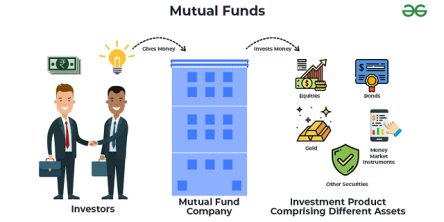The Rise of Digital Payment Solutions: How ACH and eChecks Are Changing the Landscape

Key Takeaways:
- The transition from traditional payment methods to digital solutions is reshaping business transactions.
- Automated Clearing House (ACH) and electronic checks (eChecks) offer various benefits, including cost-effectiveness and enhanced security.
- Technological advancements and consumer demand for convenience drive increased adoption of digital payment methods.
- Real-life applications highlight the growing relevance of ACH and eChecks across different industries.
- Challenges such as cybersecurity risks need to be considered and addressed.
- Future trends suggest continued innovation in the digital payment space.
In today's fast-paced world, the way we conduct financial transactions is transforming profoundly. Traditional payment methods like cash and checks have given way to digital solutions that offer unparalleled speed and convenience. ACH (Automated Clearing House) networks and electronic checks provide a streamlined, efficient process that has quickly garnered popularity. These digital solutions facilitate quicker transactions and provide an added layer of security that traditional methods often lack.
Benefits of ACH and eChecks
The shift towards ACH and eChecks has many benefits, the chief being cost-effectiveness. In contrast to credit card transactions that often bear high processing fees, ACH payments, and eChecks offer a more affordable alternative. This is a boon for businesses looking to optimize operating costs and consumers who prefer not to incur extra charges. Security is also a significant advantage of ACH and eChecks. Among these digital methods, the ACH eCheck has emerged as a game-changer, fundamentally altering how businesses and consumers manage their finances. These digital solutions employ robust encryption and authentication protocols, reducing the possibility of fraud and unauthorized transactions. This extra layer of protection instills confidence in businesses and consumers that their sensitive financial information is safeguarded. Organizations seeking to streamline operational processes find these digital options particularly compelling, as they reduce the need for physical handling and processing of funds.
Read more: Payment Gateway Provider: Key Factors to Keep in Mind
Technological Advancements Driving Adoption
The rapid rise of ACH and eCheck usage can largely be attributed to technological advancements. Over the past decade, the Internet has become faster, more reliable, and widely accessible. These improvements have paved the way for the proliferation of mobile technology and online banking platforms, making digital payments more accessible. This technological evolution supports seamless transactions, catering to the increasing demand for hassle-free payment options. For instance, Federal Reserve Banks offer ACH services to participating banks, promoting standardization and reliability across the payment industry.
Real-Life Applications and Use Cases
The practical applications of ACH and eChecks span a wide variety of industries and sectors. Consider employers who utilize ACH for payroll processing. This reduces the administrative burden and ensures employees receive their salaries promptly and securely. Retail industries have also embraced ACH and eChecks, as these methods facilitate quicker checkouts and enhance the overall customer experience. For example, in eCommerce, these payment solutions allow for seamless integration with online shopping platforms, eliminating the cumbersome nature of traditional payment methods. Even government agencies utilize these digital solutions to distribute tax refunds and social benefits, underscoring the universal applicability and efficiency of ACH and eChecks.
Understanding the Challenges
Despite the numerous advantages, digital payment solutions are not without challenges. One of the most pressing concerns is cybersecurity. Cybercriminals continuously devise new tactics to exploit vulnerabilities as digital payments become more prevalent. Thus, maintaining robust cybersecurity measures is imperative for businesses that rely on ACH and eChecks. Companies must invest in state-of-the-art security infrastructures to protect sensitive data and assure users that their financial information is secure. Keeping abreast of current cybersecurity threats and adopting a proactive approach to data protection will be crucial in mitigating risks and maintaining consumer trust.
Looking to the Future: Trends in Digital Payments
The future of digital payments is rife with possibilities, driven by ongoing technological innovation—emerging technologies such as blockchain promise to revolutionize payment processing by enhancing transparency and security. Blockchain technology can offer immutable transaction records, reducing the likelihood of fraud and unauthorized access. AI and machine learning are being used to enhance fraud detection systems, improving the ability to quickly detect and respond to suspicious activities. As ACH and eChecks advance, they are expected to remain essential in digital payments, providing effective and secure options to address the constantly evolving requirements of businesses and consumers.
Conclusion and Final Thoughts
The rise of digital payment solutions like ACH and eChecks marks a significant shift in how financial transactions are conducted. While they present numerous benefits, including cost savings and enhanced security, they also bring challenges that must be navigated carefully. By keeping up-to-date on the latest trends and technological advances, businesses and consumers can make the most of these digital payment solutions, guaranteeing safe and effective financial transactions in a constantly changing digital environment.
Similar Articles
Loud budgeting has taken over social media, with people openly discussing spending habits, saving strategies, and financial struggles. While this trend encourages transparency, it also adds pressure to meet certain expectations
Securing your financial future has become a necessity in today's world, and investing in mutual funds is one of the most popular ways to grow your wealth over time. Managing your money and investing in potential funds has become convenient and seamless with the help of the right online platforms
Gone are the days when you had to carry a wallet full of money when traveling somewhere. Now, cashless travel has become a reality due to technological developments, making it easier for travelers to manage their cash when they’re out and about.
NPS (National Pension Scheme) is a popular option for those looking to save for retirement and get a steady income through an annuity after retirement. It is supported by the Indian Government and is based on contributions made regularly. The final pension will depend on the money that you build by the time of retirement and the portion used to purchase an annuity.
Debt collection can be stressful for both the debtor and the creditor. Howеvеr, undеrstanding thе tactics commonly usеd by dеbt collectors can help you protеct yoursеlf from potential lawsuits. Whether you’re a business owner collecting unpaid invoices or an individual dealing with personal debt, being informed about the legal and ethical boundaries of debt collection is crucial.
In the fast-paced world of international trade, how can businesses ensure smooth and efficient movement of goods across borders? The answer lies in expert facilitation services that specialize in navigating complex regulations and optimizing supply chain processes.
Managing cash flow is critical for any business's survival and growth. It involves tracking the money coming in and going out of the business to ensure it can meet its financial obligations.
In the fast-paced world of finance, it can be hard to keep up with the latest advancements in technology. But for financial planners, staying ahead of the curve is crucial.
In the ever-evolving banking landscape, core banking systems enable financial institutions to provide efficient operations and exceptional customer experience. These systems serve as the backbone of banking operations, encompassing a range of software applications that manage core functions such as account management, transaction processing, and customer data management









